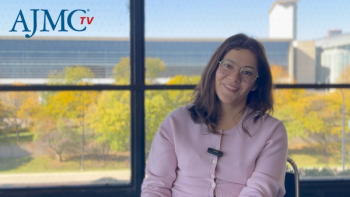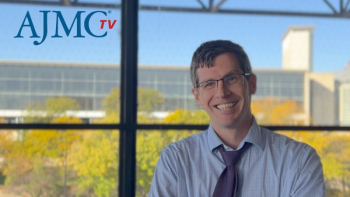
COPD Defined
Key considerations in distinguishing chronic obstructive pulmonary disease from other conditions.
Transcript
Neil B. Minkoff, MD: Hello, and thank you for joining this American Journal of Managed Care® program titled “COPD Treatment Updates: Impact on Daily Life.” Chronic obstructive pulmonary disease, COPD, is a progressive and debilitating disorder. While COPD is associated with a significant medical and financial burden, COPD symptoms also present a severe burden on patient quality of life. Our panel of experts will review the latest therapeutic developments in the treatment of COPD and address the impact of the progression of disease and exacerbations on a patient’s life.
I’m Dr Neil Minkoff, the founder of FountainHead HealthCare and the former medical director of pharmacy and network medical management for Harvard Pilgrim Health Care in Wellesley, Massachusetts, and an instructor of medicine at the Harvard Medical School, in Boston, Massachusetts.
Joining me today are Dr Maria Lopes, the former chief medical officer from Magellan Rx in Cresskill, New Jersey, and the current medical director of AMC Health; Dr Frank Sciurba, a professor of medicine at the University of Pittsburgh School of Medicine, the medical director of the pulmonary physiology laboratory and the director of the [Emphysema] COPD Research Center in the Division of Pulmonary, Allergy, and Critical Care Medicine in Pittsburgh, Pennsylvania; and Dr Byron Thomashow, a professor of medicine at Columbia University Medical Center, the medical director of the Jo-Ann LeBuhn Center for Chest Disease, and the medical co-director of the lung reduction program and Emphysema Clinic at Columbia University Medical Center in New York, New York. He is also the chief medical officer of the COPD Foundation.
Thank you all for being here. Let’s begin.
Just to level set and make sure everybody who’s watching and participating is starting from the same place, let’s start simply and ask: What is COPD, or chronic obstructive pulmonary disease, and how do you look for it?
Frank C. Sciurba, MD, FCCP: That answer has become more complicated than easy to answer, but I’m going to start with the straightforward answer as we classically define disease. That’s based on obstruction to airflow. COPD actually represents many different diseases that result in expiratory airflow obstruction. You can’t get the air out, and then there’s trapping of that air, so it limits your space to breathe in. We classically define it using a simple test called spirometry, in which you blow hard, and you see how much air comes out during that first second and the total air that comes out. If you get less than 70% of your total air out in that first second, that classically defines the disease as COPD.
Neil B. Minkoff, MD: Yeah. Spirometry and some of those results, and barriers to getting those, is something I’m going to want to come back to in a little while. But I wanted to see if you wanted to add anything to that definition, or other ways of looking for or diagnosing?
Byron Thomashow, MD: Well, as Frank has said, we’re at a time now when a number of studies are suggesting that people with symptoms may not have obstruction on spirometry, and therefore there may be a need to broaden the way we think of this disease, because people often will have symptoms before they develop obstruction. And the possibility exists that if we could diagnose them earlier, perhaps we could make more of a difference. But that’s a work in evolution as well.
Newsletter
Stay ahead of policy, cost, and value—subscribe to AJMC for expert insights at the intersection of clinical care and health economics.





























































